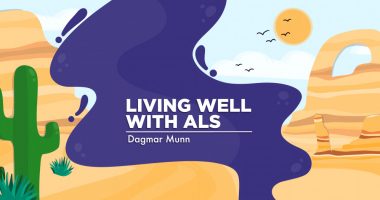Clinical Trials in Pediatric ALS ‘Simply Not Feasible,’ Scientists Argue

The rarity of amyotrophic lateral sclerosis (ALS) in children makes it impossible to realistically conduct clinical trials of experimental medicines in this population, researchers across Europe argue in a paper.
“Given the absence of consensus on pediatric ALS as a disease entity, the extremely low prevalence of ALS in the pediatric population and the potential difficulties in recruiting sufficient patients, appropriately powered clinical trials are simply not feasible,” the team wrote.
Current laws in the European Union, which mandate clinical trials in children for ALS therapies approved to treat adults, should be reconsidered, they state.
“Rather than exhausting financial resources for mandated studies in a scarce population, companies and investigators could contribute by investing resources in the understanding of pediatric ALS and to advance targeted treatment approaches,” the scientists wrote.
The research article, “Clinical trials in pediatric ALS: a TRICALS feasibility study,” was published in Amyotrophic Lateral Sclerosis and Frontotemporal Degeneration.
A 2007 law in the EU, called the Pediatric Regulation, mandates that marketing-authorization applications for potential therapies must either include clinical data on pediatric patients, or include a Pediatric Investigation Plan (PIP), a detailed plan for studying the medicine’s safety and effectiveness in children.
PIPs are evaluated by the Pediatric Committee (PDCO), a part of the European Medicines Agency (EMA). Once a PIP is approved, the therapy’s makers are required to conduct the outlined studies to potentially support a treatment’s approval for children.
If a condition does not occur in children — or if the medicine is expected to be unsafe, ineffective, or less helpful than existing therapies in pediatric patients — then PDCO can grant a waiver that exempts companies from having to carry out pediatric studies.
ALS mainly affects adults between the ages of 40 and 60. Childhood ALS, when the disease manifests before the age of 18, is extremely rare.
PDCO initially allowed a waiver on PIPs for ALS, considering the condition an adult-onset disease. In 2015, however, this waiver was revoked based on new insights into the genetics of pediatric ALS and similarities between juvenile- and adult-onset disease.
Consequently, under current law, companies working to develop ALS treatments must either comply with a PIP or request a waiver to obtain marketing approval in Europe.
Since the 2015 decision, four pharmaceutical companies have submitted PIPs to the EMA. Two received waivers — one because it targets a specific genetic form that manifests only in adults, and the other because no therapeutic benefit is expected in children.
Waivers were refused for the other two PIP requests, involving the experimental medicines arimoclomol citrate and GDC-0134. Their developers will be legally required to conduct pediatric ALS clinical trials if these potential treatments are eventually approved for adults.
“We unreservedly support the PDCO and their endeavors to improve access to medicines for children,” the researchers wrote. “However, we respectfully question whether a PIP is the best approach to achieve this.”
Regulators in Canada and Japan, they noted, do not require trials in children for adult drug development. The U.S. Food and Drug Administration does, but continues to grant waivers for pediatric ALS based on its rarity, with such “studies being highly unfeasible or even impossible.”
To determine the likely feasibility of clinical trials in children with ALS, the research team conducted a survey into the prevalence of pediatric ALS in Europe that was answered by 49 ALS centers in 19 countries across the continent.
In total, 44,858 people had been diagnosed with ALS at these centers over the prior 10 years. Of them, 39 (0.087%) were pediatric patients.
Based on the responses, the researchers estimated that a hypothetical clinical trial with 10 centers would recruit less than four patients over five years.
“The trial would require 30 sites to enroll ten patients within a 5-year period. This estimation does not take into account potential screening failures, concomitant other diseases prohibiting participation, withdrawals or other competing trial,” the researchers wrote.
They added that “in rare disease trials, each clinical phase is often twice as long due to lack of information on disease prevalence and incidence, eligible patients and difficulties in timely patient recruitment and adds additional operational costs.”
Further, clinical trials often require 50 or more participants to meaningfully detect whether a treatment is working, unless the results are extremely dramatic, which is rarely the case, the scientists noted.
“These numbers are virtually impossible for a rare disease such as pediatric ALS,” they wrote, also noting that uncommon side effects can easily be missed by chance in such small trials.
Most of the surveyed centers (75.5%) agreed that waivers should be universally applied for pediatric ALS. The minority that disagreed mainly specified that, regardless of logistical hurdles, these studies should be conducted due to the need for a treatment.
“Based on the responses of ALS experts, we suggest the decision whether or not to grant a waiver should be reconsidered for patients with ALS under the age of 18,” the researchers concluded.







